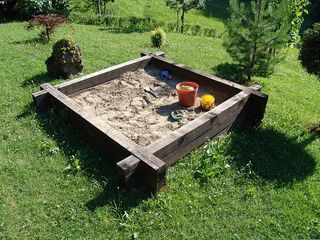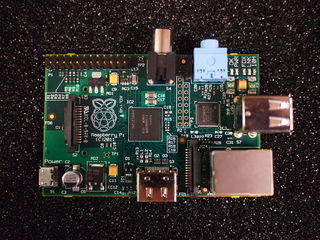Difference between revisions of "Living in a Sandbox"
| Line 36: | Line 36: | ||
* Tor public access point: onionland and co | * Tor public access point: onionland and co | ||
* MITM and public wifi access points: run your own PRISM! :) | * MITM and public wifi access points: run your own PRISM! :) | ||
| + | |||
| + | [[File:Galaxy-s4-life-companion.jpg]] | ||
| + | [[File:Soundcloud cutout.png]] | ||
| + | |||
| + | New technologies, like smart phones and web services, promise cutting edge technologies and software as a means to empower users with a seamingly endless progression of new digital possibilities. In fact, many of these new services are striking for the many constraints they place (where can this be played, how many "friends" can connect, who decides a remix means and if it can be "shared"). | ||
| + | |||
| + | Many of the platforms are themselves built on decades old technologies & software. Sandbox aims to deconstruct the digital black boxes, revealing the hidden (historical) layers of software and system, with the aim of (1) empowering students through literacy of reading these systems, and (2) encouraging new assemblages to be (strategically) reconstructed. | ||
| + | |||
| + | In this way Sandbox is aims to be a platform for: | ||
| + | |||
| + | * Critically (re)defining terms like Sharing, Network, Public/Private | ||
| + | * Create your own digital media tools for capturing and manipulating media | ||
| + | * Workshop to develop understanding of how digital media works when distributed in a network, and what unique possibilites are offered to work. | ||
== Sample projects == | == Sample projects == | ||
Revision as of 14:14, 3 September 2013
Contents
Introduction
Living in a Sandbox is an optional course that aims at exploring the culture of free and open source UNIX-like software and computer hardware from the viewpoint of a small device: the Raspberry Pi. During this course, students will be exposed to historical and technical elements of computing that are nowadays buried under an app centric culture grown in the names of user-friendliness, transparency and deceptive allegories such as the cloud.
When people hear the word sandbox, it is very likely that most of them will be thinking of the outdoor playset that consists of a container filled with sand. You probably have seen many already and have possibly played in one as a child. Using sand as medium and a couple of tools, the sandbox opens the door to a world where anything can be pretended and experimented with. For some others though, the sandbox is linked instead to the realm of software. Indeed, and similarly to its analogue counterpart, software sandboxes are used both to provide testing and prototyping environments, as well as to describe how users and processes can be isolated for security purposes. These two approaches play an important role in the development and execution of software. As a matter of fact, whether you are browsing a website, using an app, or working with your favourite digital tool, sandboxes have been and are currently used to enable and allow this action.
Truth is, digital sandboxes are everywhere and it is a bit ... problematic. Indeed, stepping out of an analogue sandbox is as easy as dusting off from your clothes the particules left from the imaginary world. The same cannot be said of the digital sandboxes which bits are tightly interleaved with our daily activities and digital diet. Seeing our increasing dependence on software and network infrastructure and in a post-PRISM age, it is becoming urgent to understand how these sandboxes operate and impact production, communication and more generally social dynamics.
The best way to explore these issues is to run your own sandbox!
Platform
Blabla on Raspberry Pi goes here.
The course
- Facilitators: Aymeric Mansoux & Michael Murtaugh
- When: roughly once every 2 weeks
- Duration: ~3 hours
- Location: Piet Zwart Institute
- Eligibility: places are limited. See your course supervisor for details.
Planned Activities for 2013/2014
The activities will be detailed and documented progressively, as the course is being developed, that is, depending on the feedback, interests, new ideas and questions from the participants. For now a rough list of things that we aim at covering across the year:
- Install party: running Raspbian on the Pi.
- operating system basics: administration and UNIX history
- C oneliners: C and shell programming basics with pipes
- wireless deaddrops and access points: setting up a standalone wireless network to share files outside of the Internet.
- camera/sensors machines: turning the Pi into a surveillance machine
- spiders/crawlers: turning a network of Pis into a data harvesting fest
- web literacy: HTML5, CSS3, js + webmaker tools
- basic client/server service development: Python, node.js and others.
- Pd patch player: a more elaborate network and web application using golang and libpd
- Tor public access point: onionland and co
- MITM and public wifi access points: run your own PRISM! :)
New technologies, like smart phones and web services, promise cutting edge technologies and software as a means to empower users with a seamingly endless progression of new digital possibilities. In fact, many of these new services are striking for the many constraints they place (where can this be played, how many "friends" can connect, who decides a remix means and if it can be "shared").
Many of the platforms are themselves built on decades old technologies & software. Sandbox aims to deconstruct the digital black boxes, revealing the hidden (historical) layers of software and system, with the aim of (1) empowering students through literacy of reading these systems, and (2) encouraging new assemblages to be (strategically) reconstructed.
In this way Sandbox is aims to be a platform for:
- Critically (re)defining terms like Sharing, Network, Public/Private
- Create your own digital media tools for capturing and manipulating media
- Workshop to develop understanding of how digital media works when distributed in a network, and what unique possibilites are offered to work.
Sample projects
- News Tweek Julian Oliver and Daniil Vasiliev (2011)
- Pirate Box David Darts (2011) [1]
- Constraint City Gordan Savicic 2009?



